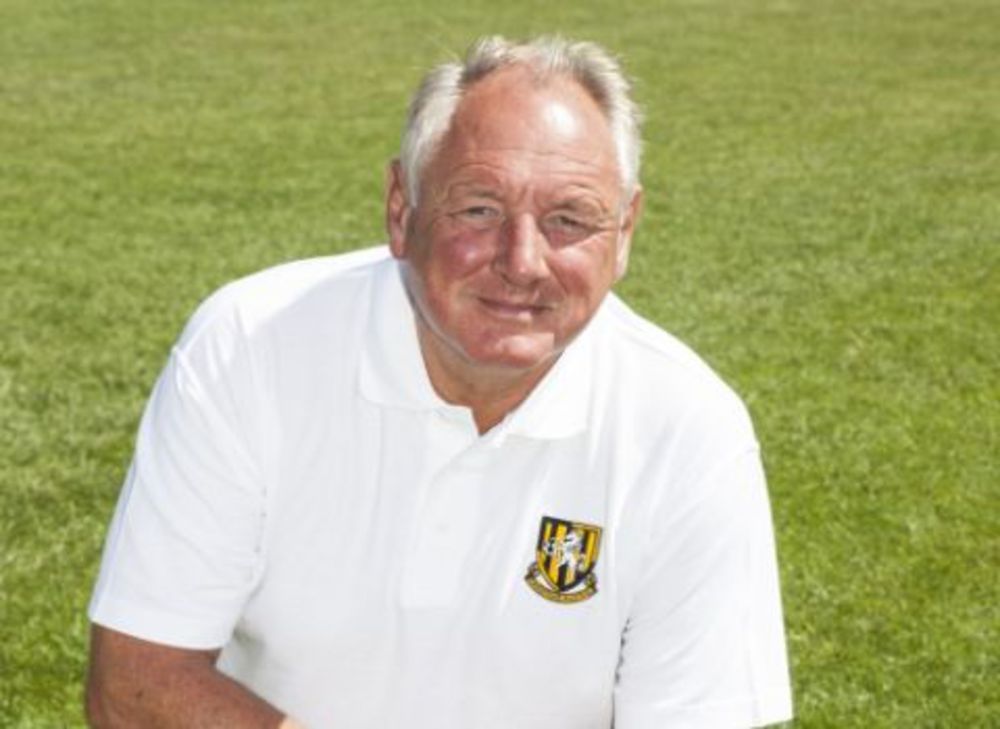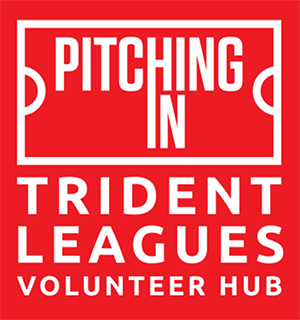
FOLKESTONE are one of the oldest clubs in the country, having been formed in 1884.
The first Folkestone club was one of the founder members of the Kent League in 1894 but left that league in 1904.
In 1923 the club resurfaced in the Southern League, where the team played until the Second World War.
The second Folkestone FC began life as Folkestone Town and played in the Kent League from 1945 until the league folded in 1959, whereupon the club joined the Southern League.
The club also installed floodlights in 1959 and were switched on in a friendly against Burnley when their chairman Bob Lord flicked the button in front of 5,528 at Cheriton Road.
The club spent just one season in the First Division, finishing third, and had two seasons in the Premier Division before going back down in 1961/62.
But in 63/64, they were back after winning the title by two points from King`s Lynn.
In 1968 this club adopted the Folkestone FC name, followed in 1974 by another name change to Folkestone and Shepway FC, which lasted for six years before the Shepway element was dropped.
The club folded in 1990 and withdrew from the Southern League and, although a new club, Folkestone Town (1990) FC was formed, it also folded without even completing a full season in 1990/91.
Local side, Folkestone Invicta, who were playing in the East Kent Amateur League at the time, acquired the lease on the Cheriton Road ground for a five-year period.
Up to then, they had been playing in Hythe, a few miles down the Kent coast.
Invicta then undertook the job of repairing and re-painting the ground and at the end of the 1990/91 season, they applied to join the Kent League Division One.
They were successful but were placed into Division Two – a league made up of reserve teams and therefore became the only non-reserve side in the section.
Although they were not completely happy at this decision, they got on with it and began to plan for the new challenges ahead.
They appointed Gary Staniforth as manager, and he began to put together an experienced and talented squad of players, many of whom had played in the Southern League with the old Town club, including goalkeeper Lee Harrington, defenders Gary Collins and Derek Graham, midfielders Clive Barham and Micky Heynes and striker Mark Warlosz.
Barham, who was skippering the team at the time, is the brother of Mark Barham, who actually began his career with Folkestone Town before embarking on a professional career with Norwich City in 1980 – a career which culminated in winning two full England international caps.
Invicta gained promotion to Division One in 1992/93 but Staniforth was replaced in 94/95 by former Folkestone, Dover Athletic and Hythe Town forward Tim Hulme as player-manager for the 1994/95 season.
Hopes were high for the 1995/96 season as Invicta strengthened their squad, but things turned sour during the second half of the season as Hulme left the club, with his assistant Micky Dix taking over for the remainder of the season.
Former Canterbury City boss Darren Hare was recruited for the 1996/97 season, but after a poor start, he was soon replaced by one-time Folkestone Town manager Denis Hunt, assisted by veteran player Bobby Wilson.
It was the arrival of Neil Cugley (pictured) from Ashford Town as manager during the summer of 1997 which proved decisive.
Cugley`s side finished second in 97/98 to Herne Bay and gained a spot in the Southern League South Division.
That was a tough Kent League as well at the time, with the likes of Canterbury City, Faversham Town, Ramsgate, Whitstable Town, Hythe United and Greenwich Borough in the division.
Invicta finished third behind Havant & Waterlooville and Kent rivals Margate in their first season in the Southern League and also enjoyed a record-breaking run in the FA Trophy by beating Conference club Hayes to reach the Third Round before going out 8-4 in an amazing tie away to three-times winners Woking.
After a re-structuring placed them in Division One East, Folkestone were right in the frame for the title as the new Millennium arrived.
But there was top be final day heartbreak for Invicta as the championship went right to the wire with Fisher winning away to Newport (IoW) to make Invicta’s final day win at Wisbech Town in vein.
The 2000/01 season saw Cugley`s side compete in the Southern League Premier Division for the first time and Invicta achieved their objective of staying up by finishing 17th.
The 2001/02 season saw an improved Invicta side briefly top the Premier Division table for the first time in the club’s history during the opening weeks of the season and it ended in dramatic fashion as Invicta`s 3-3 home draw with Tamworth on the final day of the season denied the Lambs the championship watched by a crowd of 1,277 - the highest ever home attendance for an Invicta league match – and they were pipped by Kettering Town.
That attendance record was broken just a few months later when, in August 2002, the visit of neighbours Dover Athletic attracted a crowd of 1,446 to Cheriton Road.
However, the 2002/03 season was to prove a difficult season for Invicta as financial constraints took their toll and they finished bottom of the table and was relegated back down to Division One East.
The following season was more successful for Invicta as the club finished fifth in to win promotion via another re-structuring of the non-League Pyramid.
It was the end of Folkestone`s Southern League journey as the club were
switched to the Isthmian League for the 2004/05 season and they have remained members of that league ever since, going down from the Premier Division in 2008, bouncing back for one season in 2011 and then returning at the end of the 2017/18 season.
The old ROMFORD club, which itself was re-formed in 1929 after originally being formed in 1876, was one of the best-known names in non-League football.
They reached the third round of the FA Amateur Cup just one year after their reformation and were Essex Senior League winners in 1932.
In 1936, Romford reached the Amateur Cup semi-final, where they lost to the equally famous Corinthian-Casuals, and that year they also became the first amateur club to form itself into a company in order to preserve their ground from re-development.
The authorised capital of £10,000 was divided into 80,000 shares, costing 2s 6d each!
After continued success, including Athenian League titles, 1949 saw Romford reach the Amateur Cup Final.
To get there, they overcame northerners Crook Town at West Ham United`s Upton Park in a replay in front of a crowd of 25,000!
In the final, a staggering 94,000-plus saw Romford take on Bromley at Wembley.
However, it was the Kent side that ran out winners by the only goal of the game.
In 1958, the club announced that it was going to turn professional and join the Southern League.
One of the first players to come to Romford as a pro club was former Tottenham Hotspur and England goalkeeper Ted Ditchburn.
Another ex-Spurs player, Jack Chisholm, was appointed as manager and in 1959/60, the club achieved promotion as First Division runners-up.
Romford`s first season in the Premier Division saw players such as Malcolm Allison and former Welsh international star Trevor Ford join the Brooklands outfit.
After a few seasons of struggle, Harry Clarke, yet another ex-White Hart Lane man, took over as manager in 1962, taking over from Ditchburn, who remained as a player though until 1965.
The 1966/67 season saw Romford clinch the Southern League title, beating off the challenges of Weymouth, Nuneaton Borough and Wimbledon on an exciting last day of the season.
During Clarke`s reign as manager, some well-known stars of the Football League were signed, including former Chelsea and England winger Peter Brabrook, ex-West Ham striker Alan Sealey, goalkeeper Dave Hollins, brother of John, Ray Harford – later to become manager of Luton Town and Wimbledon – and a certain Barry Fry!
However, Clarke`s 13-year spell in charge came to an end in 1975 and former player Ray Freeman took over.
But in his first season in charge, Romford`s 15-year Premier Division life ended.
Dave Bickles, a long-serving player at Brooklands and another former Hammer, replaced Freeman in 1976, but just over a year later, the club was no more.
The Brooklands ground was sold to property developers and negotiations with Havering Council to develop the site at Oldchurch ran into trouble.
Due to debts and tax bills, only £65,000 of the £600,000 received for the sale of the ground remained to develop a new site and work ceased as the money ran out.
Bickles remained as manager and the team was held together in the hope that the problems could be resolved.
But it was not to be and the club folded.
It wasn`t until 1992 that a `new` Romford FC was formed by former supporters as a members` club.
It was `donated` the Limited Company, Romford Football Club Ltd., by a local businessman but the club decided to go down the members' route.
The new Romford were accepted into the Essex Senior League in 1992 and finished a creditable ninth in its first season – the title going to Canvey Island.
In 1996, the club merged with Collier Row to become Collier Row & Romford which gave them access to Collier Row`s place in the Isthmian League.
They changed the name back to Romford a year later and, apart from being relegated back to the Essex Senior League in 2002 until 2009, have spent the rest of the time in the Isthmian League, albeit struggling on the field in recent years.

Most clubs are looking for volunteers. Find out more on the button below:
www.PitchingInVolunteers.co.ukAll the news and results in one place.
REGISTER